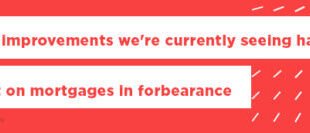
If you find yourself saying, “My rent is too high to save money for a house,” you’re not alone. In fact, back in 2010, a Brooklynite running for governor made the phrase go viral.
Many renters find themselves in the troublesome position of putting a majority of their take-home pay straight into a landlord’s pockets. On top of that, there are utility and phone bills, car payments and auto insurance, gas, groceries, and internet charges. That’s not counting the costs of eating out, an occasional bottle of wine and, if you’re lucky, an annual vacation.
If you don’t have the luxury of living rent-free, it may feel like an impossible task to save for a down payment. No worries, we pulled together nine simple steps you can start today to bring you one step closer to buying your first home.
- Jot it down
The best way to see where you can save money is by tracking your spending, even if it’s automatically debited like EZPass highway tolls. An uber ride here, drinks with friends there, filling the gas tank: It all adds up, and the best way to cut back is to open your eyes to it. Make a few adjustments and you’ll be well on your way to saving.
- Break up with unnecessary expenses
If you’re diligent about our first tip, you’ll probably discover that you’re paying for a lot you don’t need or hardly ever use. Late-night online shopping? That pricey gym membership you only use occasionally? Expensive cable, internet, telephone bundles? Cut them all out. It’s not easy, but once you get into savings mode, you’ll be surprised at what you can do without. In your effort to start saving for a down payment, try these:
- Work out at home. Bike and run outside. Save around $ 60+ a month
- Cook more, eat out & get delivery less. Depending on your family size, you could save at least $ 250+ a month. And tipping the delivery guy can get expensive, too.
- Shop generic or use coupons/loyalty apps. Save $ 160+ a month
- Cut the cord and go internet-only. Save 100+ a month by ditching cable
- Pro-tip: many streaming services offer family plans that are even cheaper when you split
- Renegotiate your rent
If you’re a good tenant who always pays the rent on time, ask your landlord for a rent reduction in exchange for a longer lease term. Many may be willing to work with you since it’s not always easy to find good tenants. If they’re not able to budge, consider moving to a more affordable apartment where you can negotiate things like parking costs, amenity fees, and utilities. Some have been known to give new tenants a month or two rent-free just for signing a lease. That alone could pad your bank account as you look for other ways to save for down payment while still renting.
- Find a roomie
If you’ve got a lease on a two-bedroom apartment and you’re not using the second room as a sleeping space — maybe it’s your home office, storage or workout room — consider turning it into an income generator. Getting a roommate to pay rent directly to you and chip in on utilities can significantly speed up your down payment savings.
- Automate
The best way to save is to make the process automatic—like the way your 401K works. Research high-yield savings accounts with a $ 0 minimum balance, set one up, and begin automatically deferring a portion of your paycheck directly into that account. You’ll start earning a percentage on your savings without even thinking about it. Then commit to never use those savings for any purpose other than your future down payment.
- Pay down high-interest debts
A high balance on high-interest credit cards can legitimately thwart your savings plans. Plus, it can do serious damage to your credit score—something you’ll wish you’d kept a closer watch on when you’re ready to buy a house. The good news is that once you pay down your credit cards, they won’t continue to negatively affect your score. Start by paying off the balance on your highest-interest card and then close it. If you can’t pay it off, transfer the balance to a lower-interest card and then commit to paying it off as soon as possible.
- Nickel & dime it
We’re behind any tool that encourages mindless, automatic saving. If you don’t have to think about saving, you’re more likely to do it. Acorns is one app we’re intrigued by that will round up purchases on linked credit or debit cards, then sweep the change into a computer-managed investment portfolio. You choose how aggressive you want your investments to be and boom, you’ll (hopefully) start seeing real returns. Note, however, that profits are taxable, and there are fees involved, but they’ll be minimal compared to using an investment broker.
- Get a side-hustle
Side-hustles aren’t just for college kids. From babysitting or tutoring to driving for Uber—there are countless ways to creatively earn extra income. Look round your home and you’re bound to see something that could quickly score some cash on eBay or Letgo. Or maybe you’ve got a creative streak that would merit opening an Etsy store. If you’re a gamer, consider starting a streamer channel on Twitch. It takes some sweat equity, but the payoffs can be worth it. And you can put some, or all, of the money you make toward your down payment savings.
- Use cash.
For me, using PayPal doesn’t feel like spending, at least not until I see my monthly bank statement. Eliminating friction-free online shopping is a start, but transitioning to cash-only in-person transactions is an even bigger challenge. Sure, cash is a little old fashioned, but when your purchasing power is limited to cash-in-hand, you start to seriously question whether a $ 5 latte or a new pair of kicks is absolutely, positively necessary. Stashing the charge card and developing some self-discipline around everyday purchases is a great way to squirrel some coin away for a future home.
Small steps can lead to real savings
While saving for a down payment may seem a little daunting, it’s easier than you’d think, especially when you start to see progress. Just remember, if you’re saving for a house, the down payment is only one of the costs you’ll need to come up with. There are also closing costs, inspections, appraisals and other fees. A Movement Mortgage loan officer would be happy to give you more insight into what costs to expect for your particular situation.
One more thing: When it comes to a mortgage, FHA loans are more affordable for first-time homebuyers and are available with a down payment of only 3.5%. Find out more about eligibility requirements for this program, and others, by reaching out to a local loan professional near you. Until then, keep saving.



